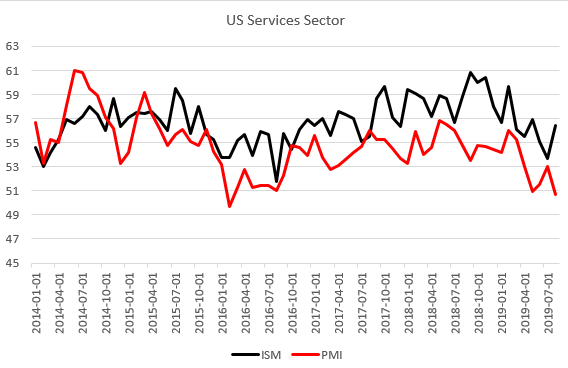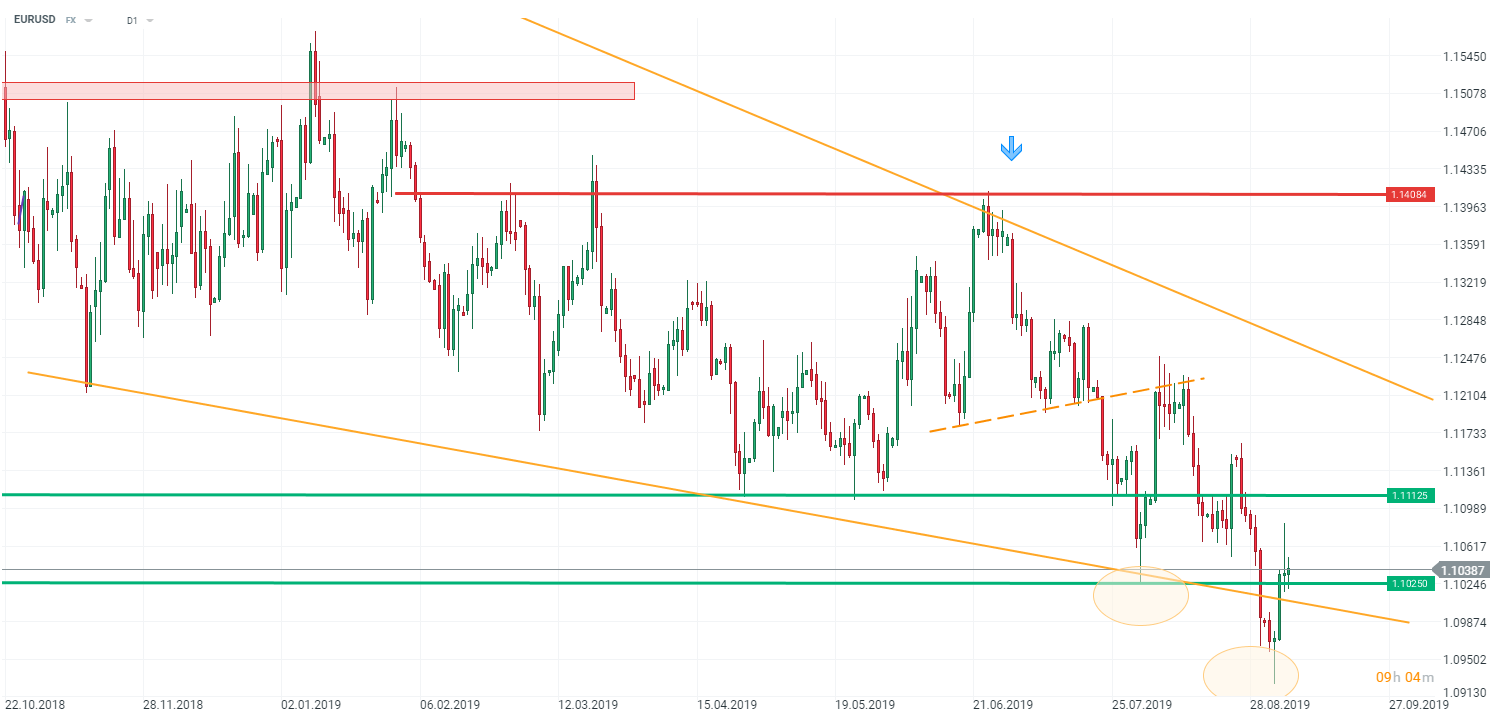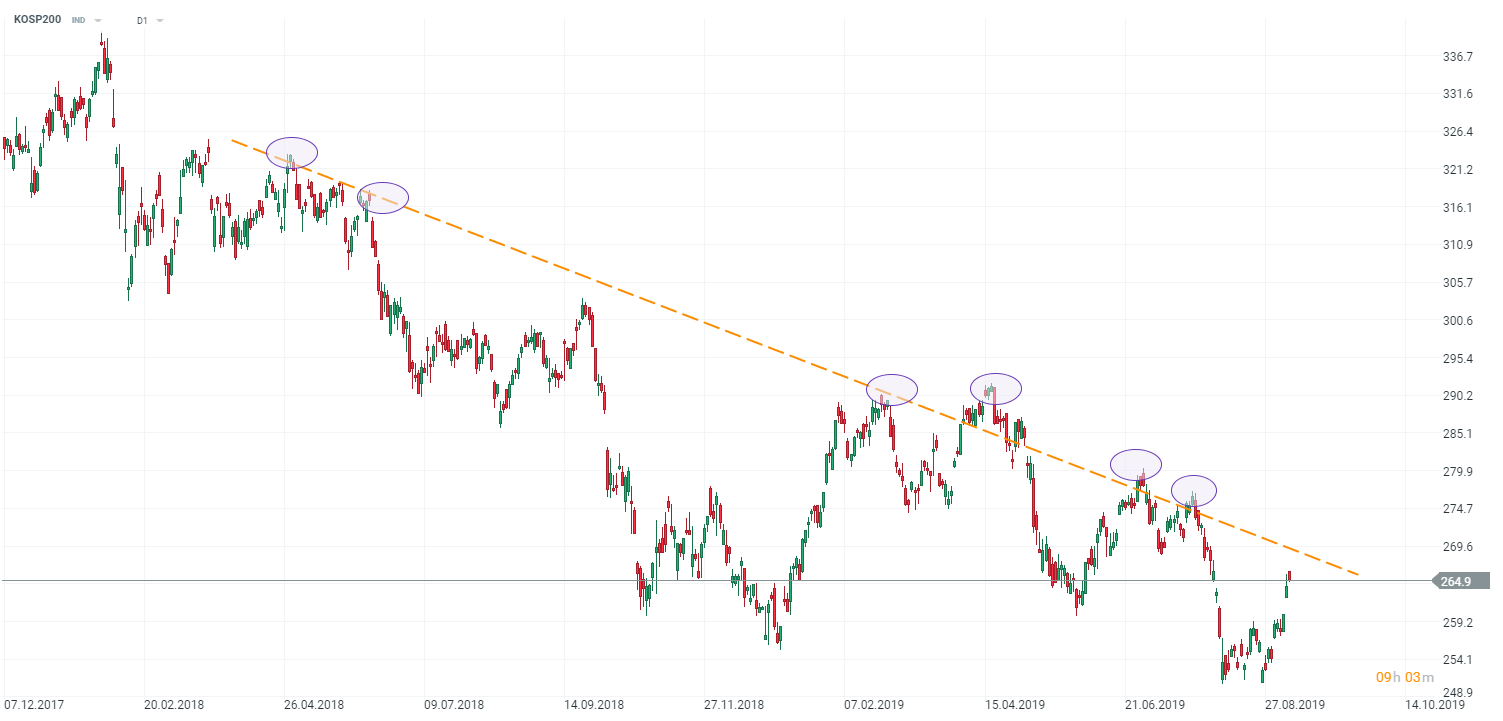- Very puzzling data from the US but the Fed will cut rates
- Mixed data from Europe (again)
- Bright spots in Asia (green shots or fake signal?)
US – economy sending (very) mixed signals
The US industry is now feeling the wrath of global slowdown with the ISM now below 50 points for the first time since 2016. However, the broader economy looks solid. The ISM non-manufacturing surged to 56.4 pts. which was at odds with a similar PMI reading from Markit (only 50.7 points). Labour market data was mixed too: the NFP was on the weak side at +130k, not confirming a bullish ADP reading of +195k but then again wages rose by 3.2% y/y – higher than expected. This mixed bag of reports will probably cement division in outlook at the FOMC but weaker NFP reading and low ISM manufacturing should be enough to allow President Powell win another interest cut at the next meeting.
Start investing today or test a free demo
Create account Try a demo Download mobile app Download mobile app ISM non-manufacturing was surprisingly good but a similar PMI (produced by Markit) shows a completely different picture. Source: Macrobond, XTB Research
ISM non-manufacturing was surprisingly good but a similar PMI (produced by Markit) shows a completely different picture. Source: Macrobond, XTB Research
Europe – German industry data remains weak
There was some hope in Europe when August PMIs showed improvement, especially in services. However, German manufacturing – the heart of economic downturn in Europe – remains very weak. The German manufacturing PMI was one of the very few that failed to show a significant improvement and both orders (-5.6% y/y) and output (-4.2% y/y) data was weaker than expected. Next week the ECB will have to decide on the scope of monetary easing. It looks like the interest rate cut is already penciled in (despite all the lament from banks) but the QE restart can be postponed until Lagarde takes the reins. If that’s the case the euro could actually benefit but stocks wouldn’t be too impressed.
 A return of EURUSD above 1.10 is more a result of lower political risk than better macro picture. Source: xStation5
A return of EURUSD above 1.10 is more a result of lower political risk than better macro picture. Source: xStation5
Asia – bright spots in Korea and China
That was a week of hope in many terms, including macro data in Asia. In China, 3 out of 4 major PMIs improved with Markit manufacturing PMI returning above 50 line after 2 months of weaker readings. More importantly in Korea (that serves as a signal industry), manufacturing PMI jumped from 47,3 to 49 points – still below the recovery mark but highest since April. Some of that improvement is being driven by output and prices not new orders and we saw such an uptick in March so one needs to remain cautious. On one hand China announced reserve ratio cuts but that also means the country does not see a sudden change in traction of the trade conflict with the US. Unless it’s mitigated, and similar one between Korea and Japan escalates, it could be too early to see a lasting recovery.
 An uptick in KOSP200 reflects some better data from Asia. Source: xStation5
An uptick in KOSP200 reflects some better data from Asia. Source: xStation5

